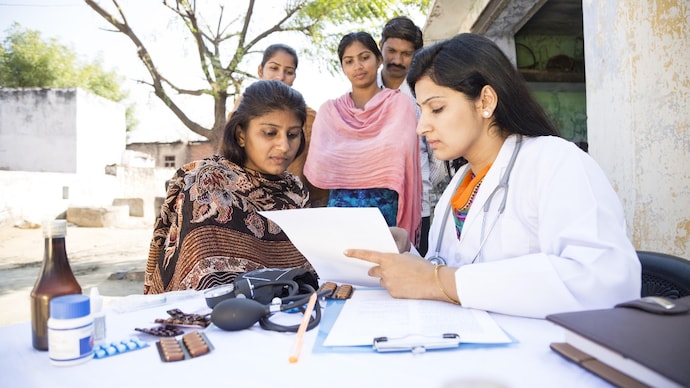Direct health care costs not covered by insurance fell by 39.4%
According to National Health Accounts estimates, India’s out-of-pocket expenditure on health has declined, from 64.2% in 2013–14 to 39.4% in 2021–22.

According to the National Health Accounts estimates for 2020-21 and 2021-22 released by the Health Ministry on Wednesday, India has experienced a reduction in out-of-pocket expenditure as a share of total health expenditure, falling from 64.2% in 2013-14 to 39.4% in 2021-22, indicating a positive trend.
Out-of-pocket expenses refer to direct payments made by individuals for health services at the time of treatment, which are not covered under insurance or any other financial protection scheme.
This includes the cost of doctor visits, medications, hospital stays, tests, and other medical services.
In countries where people have to spend more on their health care needs, they bear a greater financial burden, which puts a lot of economic pressure on them and deprives them of getting the necessary medical care.
The decline in this sector, as seen in India’s health expenditure reports, reflects that government schemes and health insurance are covering a larger portion of medical costs.
The report also highlighted that the share of government health expenditure in the country’s gross domestic product (GDP) increased from 1.13% in 2014-15 to 1.84% in 2021-22.
Additionally, the government’s contribution to total health expenditure will increase from 29% in 2014–15 to 48% in 2021–22.
The NHA report provides a comprehensive account of the financial flows in India’s health system, including the sources of funds, how the money is spent, and the nature of health services provided.
Dr VK Paul, Member (Health), NITI Aayog, highlighted the improvements made in the methodology used for NHA estimates over the last nine years, which have resulted in more accurate data.
He highlighted the impact of schemes like Ayushman Bharat PMJAY, which has led to savings of over Rs 1 lakh crore. He said the free dialysis scheme launched in 2015-16 has benefited over 25 lakh people.
The NHA estimates use the globally accepted ‘System of Health Accounts (SHA) 2011’ framework, making international comparisons possible.
According to the report, Government Health Expenditure (GHE) as a percentage of GDP has increased from 1.13% in 2014-15 to 1.84% in 2021-22. The share of GHE in General Government Expenditure (GGE) has also increased from 3.94% to 6.12% during the same period.
Government health expenditure per capita has increased threefold, from Rs 1,108 in 2014-15 to Rs 3,169 in 2021-22. Between 2020-21 and 2021-22 alone, government health expenditure increased by 37%, a reflection of the government’s proactive measures to tackle the Covid-19 pandemic.
Another positive trend highlighted in the NHA report is the rise in social security expenditure (SSE) on healthcare, which helps reduce out-of-pocket expenditure. The share of SSE in total health expenditure increased from 5.7% in 2014-15 to 8.7% in 2021-22, providing a safety net to individuals in accessing essential healthcare services.





